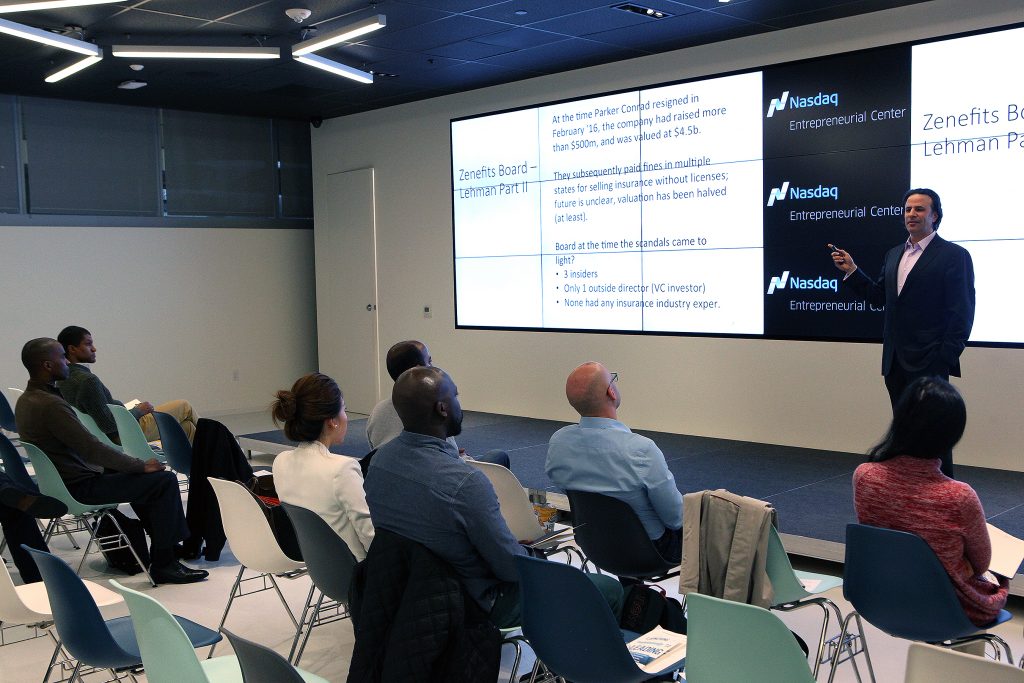If serving on the board of a large-cap company is like staying at the Four Seasons, small-cap boardroom service is akin to camping. When directors who are more accustomed to the accoutrements of the former decide to “rough it,” sometimes it’s a great boardroom experience, and sometimes it isn’t.
Resource Shock
In Silicon Valley, leaders of early stage companies are known to joke that in addition to being CEO, they are also in charge of arranging office furniture, stocking the refrigerator, and fixing copier paper jams. Large-cap professionals who might not initially appreciate the start-up CEO’s lament must confront these realities after joining a small public company board.
The disparity in resources should never be taken lightly by small-cap boards or their large-cap invitees. Large-cap company professionals are often taken aback by diminutive director and officer policies underwritten by sometimes less heralded carriers; smaller professional service providers; no governance staffs; under-resourced finance departments; minimal or nonexistent onboarding procedures; small (or no) budgets for board advisors; and sometimes minimal (or no) cash stipends for board service.
Those from large-cap settings need to be frank with themselves about whether the ability to endure such a “baptism by fire” is really in their DNA, particularly if it’s their first public company directorship. Similarly, small-cap boards need to be realistic about what they might be getting with their large-cap transplant. What small-cap boards define as “hands on” might mean something different to those from resource-rich companies.
Experience Gulf
Although governance best practices apply to companies of all sizes, it’s inescapable that overseeing a company like Chevron is a fundamentally different undertaking than being on the board of a preclinical biotech company with a $50 million market capitalization.
Areas that might require no boardroom oversight at a Fortune 500 company could require rigorous review at a smaller public company, not to mention unique expertise. For example, Apple’s board probably doesn’t spend appreciable time reviewing Tim Cook’s investor presentations prior to his meetings with institutional investors. But for the board of a nascent, cash-starved company where a first-time CEO is about to undertake a “must-have” round of financing, it’s a formidable enterprise risk that requires acute monitoring. Moreover, a Fortune 500 CEO under consideration for a small-cap company’s board might know a lot about transacting a $3 million private placement with a mixture of small hedge funds and retail investors, but they also might know nothing at all about that.
For directors with considerable experience governing large public companies, it’s always an adjustment to oversee management teams that might lack material public company leadership experience. What’s often even less appreciated by large-cap directors is what it might be like to serve on a board with directors who lack substantive governance experience. Unfortunately, two director archetypes abound: the “my way or the highway” large-cap veteran, or the easily intimidated neophyte smallcap director who becomes passive when faced with directors with extensive large-cap experience.
Parties regularly fail to approach these relationships from informed perspectives. Large-cap officers, directors, and professional service providers interested in small-cap board service should consider seeking relevant education to get a realistic sense of what awaits. Similarly, small-cap nominating and governance committees should be clearer about their “asks” when considering a prospective director from the large-cap world.
Like most relationships, this is one best entered into with both eyes wide open.
This post was originally a feature in Directorship Magazine, September/October 2016.
________________
Save



